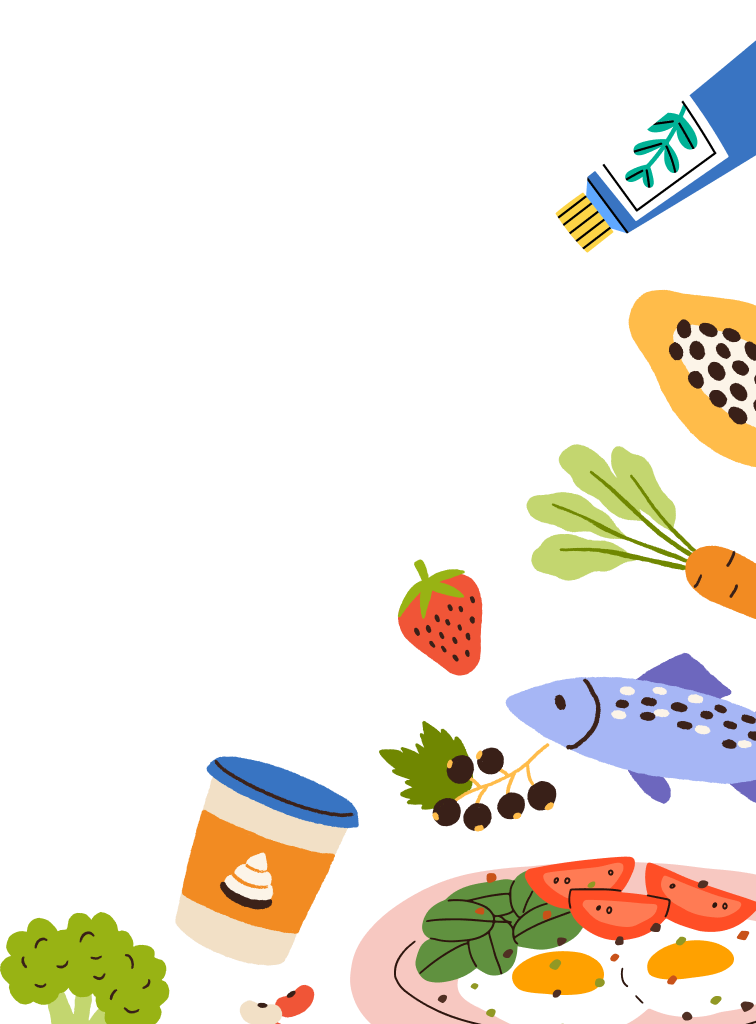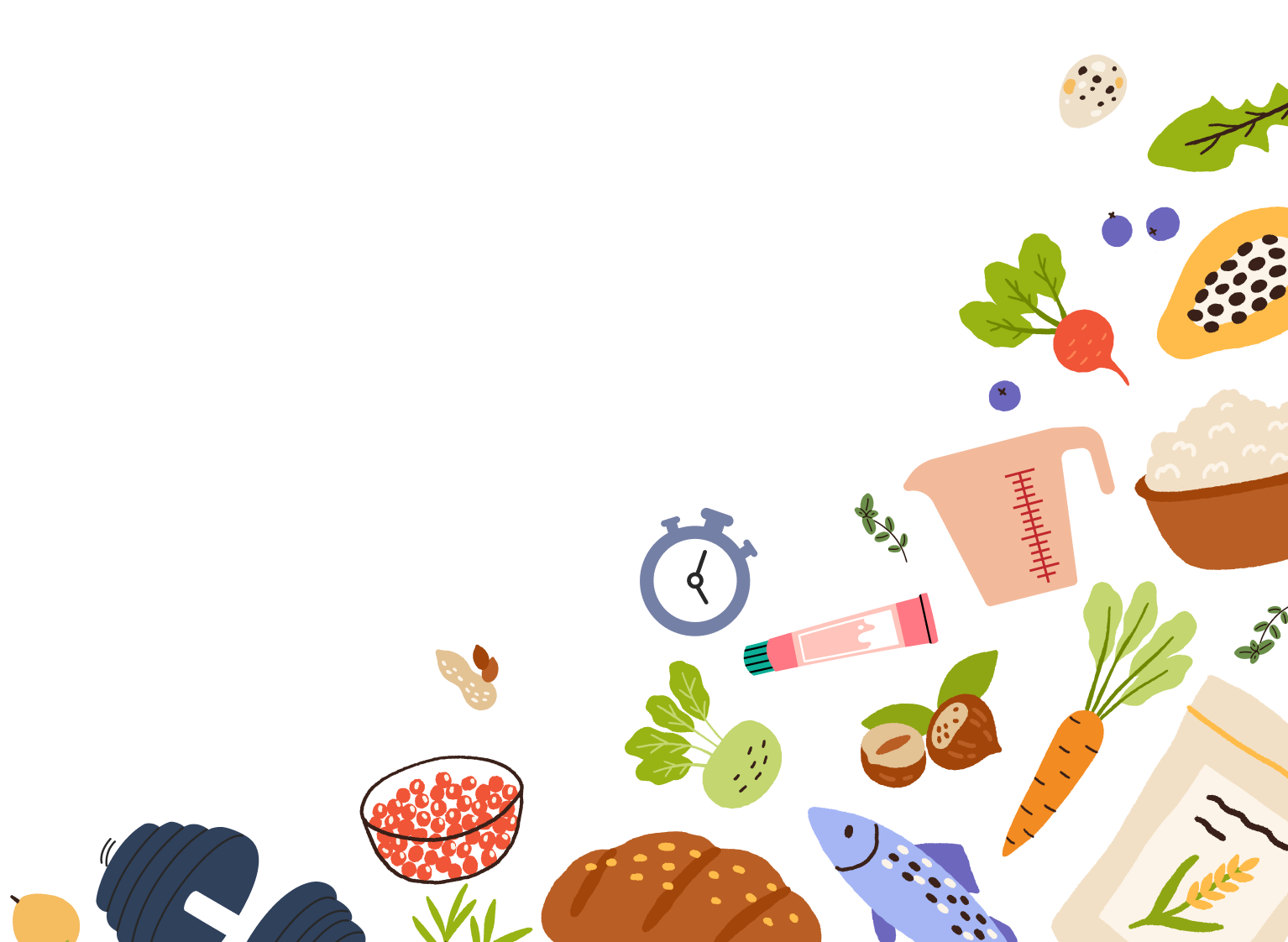Why Chia Seeds Deserve a Place in Your Diet
Growing up in the 2000s and 2010s was an experience, to say the least. One core memory of watching cable TV with my parents was a commercial with a particularly catchy slogan: “Ch - ch - ch - chia!”
Chia Pets were everywhere. I had one myself, but I must admit I didn’t take very good care of it. Fast forward to 2025, and chia seeds are making a resurgence. However, this time, they won’t be on clay planters. We’re adding them to our food!
Disclaimer: I should clarify that while the chia seeds used in Chia Pets are the same as those you can add to smoothies, water, and various snacks, Chia Pets chia seeds are NOT recommended for consumption.
The Mighty Chia Seed: A Nutritional Powerhouse
Chia seeds are derived from the Salvia hispanica plant, native to Central America. This plant is actually a member of the mint family, though without the signature smell. Chia seed consumption can be traced back as far as the Aztecs, where these tiny powerhouses were a staple in the People of the Sun’s diet. Chia seeds also migrated into North American culture through the Salvia columbariae plant. These plants produce “golden chia” seeds and are featured in a popular Mexican drink called chia fresca. This drink is still enjoyed today and can even be customized to your taste preferences!
A Nutrient-Rich Superfood: Essential Vitamins and Minerals
Chia seeds are packed with several essential vitamins and minerals, including calcium, copper, iron, magnesium, manganese, phosphorus, and selenium. These vitamins are extremely important in maintaining healthy body functions, including metabolism, bone health, tissue maintenance, oxygen transport, and nerve conduction. Chia seeds also contain several plant compounds, such as kaempferol, quercetin, chlorogenic acid, and caffeic acid. These antioxidants have been linked to decreasing consumers' risk of cancer and other chronic diseases.
Fiber Power: Promoting Gut Health and Satiety
One of the biggest benefits of chia seeds is that they are packed with fiber. Just one ounce of chia seeds has about 9.8 grams of dietary fiber! According to Harvard Medical School, an increase in fiber intake can decrease the risk of coronary heart disease and digestive disorders. Specifically, fiber provided by chia seeds can assist with constipation and regulate bowel movements. That’s right, Foodguides fam, adding chia seeds to your diet can help relieve your unpleasant IBS symptoms!
Chia Seeds and Heart Health: A Cardiovascular Boost
In addition to being gut-healthy, chia seeds are also heart-healthy! Chia seeds are packed with omega-3 fatty acids and are a great nutritional choice for controlling blood sugar. They have also been linked to decreasing your risk of dementia, which can improve your emotional and mental heart health!
Omega-3 Fatty Acids: Lowering Cholesterol and Reducing Inflammation
Omega-3 fatty acids are a type of polyunsaturated fat that are not produced naturally by the human body, which is why they are classified as an essential fatty acid. Omega-3 fatty acids can be further divided into three subgroups: alpha-linolenic acid (ALA), docosahexaenoic acid (DHA), and eicosapentaenoic acid (EHA). While each of these acids is important, ALA is the primary omega-3 fatty acid present in chia seeds. Since the other two acids are mainly found in seafood, chia seeds serve as an excellent source of omega-3 fatty acids for vegetarians and vegans.
Several studies have shown that an increase in omega-3 fatty acids in a healthy diet is associated with lowering blood pressure and cholesterol levels. This means your blood is easier to pump through your cardiovascular system, which can also help reduce inflammation by promoting oxygen delivery throughout the body.
Fiber and Blood Sugar Control: Benefits for Heart Health
As mentioned previously, chia seeds are packed with fiber. While fiber is usually associated with gut health, it can also impact blood sugar levels. Similar to omega-3 fatty acids, fiber can be further broken down into types: soluble and insoluble fiber. When consumed, soluble fiber can slow digestion by creating a gel-like substance in the stomach. This gel can help prevent dangerous blood sugar spikes, which, in turn, could create heart complications. Conversely, insoluble fiber passes through the stomach intact, which helps increase insulin sensitivity, further aiding with blood sugar control. In either case, consuming fiber (along with a heart-healthy diet and exercise) will keep your heart in tip-top shape.
As a side note, some studies have demonstrated a correlation between increased chia seed consumption and decreased overall blood sugar levels and insulin resistance, leading to fewer diabetes diagnoses. However, these studies have conflicting reports, with results supporting this theory (mainly in animals) and disproving it (mainly in humans).
Chia Seeds and Weight Management: A Satiating Snack
Thanks to their nutritional value, chia seeds are an excellent option for those who want to lose weight and stay hydrated. So, what’s their secret?
Protein and Fiber: The Perfect Combination for Weight Loss
You guessed it…fiber!
In combination with protein (also found in chia seeds), fiber helps the body feel fuller longer. This prevents overeating, a common denominator in weight gain across all body types. Chia seeds also contain all nine essential amino acids, making them a more effective source of protein than most cereals and grains. It’s important to note that chia seeds are an excellent supplementary protein source but should not be used as your primary protein source, especially when you are working to lose weight. Speak with your doctor and dietitian to create a nutrition and exercise plan that is right for you!
Hydration Hero: Chia Seeds and Water Retention
If you’ve ever had a Chia Pet, you know the slimy film created by chia seeds when they interact with water. While this creates a fun sensory experience for children, it can also aid with increasing your hydration when added to your daily water intake. An excellent recipe to follow is ¼ cup of chia seeds per 8 oz of water. Once added, cover the mixture and allow the gel to form for about 15 to 20 minutes. If this concoction is not to your liking, try adding lemon and other flavors, as well as experimenting with the chia-to-water ratio.
Incorporating Chia Seeds into Your Diet: Creative Recipes
There are dozens of creative chia seed recipes available. Thankfully, you can look no further than Foodguides for delicious, gut-friendly recipes featuring chia seeds! I’ve also included some recipes from other sources to bring chia seeds straight to your kitchen.
Chia Seed Pudding: A Simple and Delicious Breakfast
Need a quick and easy breakfast? Foodguides Expert Contributor Lisa Green’s charming chia seed pudding is an excellent option. Bonus points: it’s healthy and can be easily meal-prepped for those busy on-the-go mornings. You can also add your favorite berries, chocolate, and other toppings to make your pudding unique to your taste preferences!
Chia Seed Jam: A Healthy and Versatile Topping
Another chia seed classic is jam. Chia seed jam is an excellent alternative to store-bought jams, with fewer sweeteners and more nutritional value. Lisa Bryan of Downshiftology recommends adding chia seeds to your favorite fruits when making homemade jam and enjoying it with pancakes, waffles, toast, and other tasty creations.
Chia Seeds in Smoothies and Drinks: A Nutrient-Packed Boost
If you’re looking for a Low FODMAP option for chia seed goodness, Foodguides expert contributor Taylor Janulewicz created a delicious smoothie with papaya, banana, yogurt, and honey that can easily incorporate chia seeds to enhance its nutritional (and tasty) value.
Which chia seed dishes are you going to try? Snap a photo and tag us on social media!
-
Ajmera, R. (2023, October 30). The 6 best plant sources of omega-3 fatty acids. Healthline. https://www.healthline.com/nutrition/7-plant-sources-of-omega-3s
-
Barhum, L. (2024, August 7). 9 benefits of Drinking Chia Seed Water. Verywell Health. https://www.verywellhealth.com/chia-seed-water-8687809
-
Bjarnadottir, A. (2024, November 1). Chia seeds 101. Healthline. https://www.healthline.com/nutrition/chia-seeds#vitamins-minerals
-
Centers for Disease Control and Prevention. (2024, May 15). Fiber: The CARB that helps you manage diabetes. Centers for Disease Control and Prevention. https://www.cdc.gov/diabetes/healthy-eating/fiber-helps-diabetes.html
-
Hjalmarsdottir, F. (2019, May 27). The 3 most important types of omega-3 fatty acids. Healthline. https://www.healthline.com/nutrition/3-types-of-omega-3
-
Klemm, S. (2021, January 25). What are Chia Seeds?. Academy of Nutrition and Dietetics: eatright.org. https://www.eatright.org/food/food-groups/fats/what-are-chia-seeds
-
Pointe-A-Calliere. (2015). The Aztecs, people of the sun, The Aztecs, https://pacmusee.qc.ca/en/exhibitions/detail/the-aztecs-people-of-the-sun/
-
Restivo, J. (2024, February 21). Chia seed benefits: What you need to know. Harvard Health. https://www.health.harvard.edu/nutrition/chia-seed-benefits-what-you-need-to-know
-
USDA. (2019). Seeds, chia seeds, dried, FoodData Central Food Details, https://fdc.nal.usda.gov/food-details/170554/nutrients



















Comments
Join The Conversation...